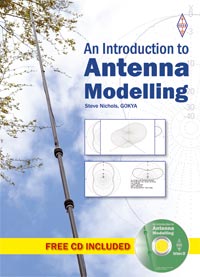
The equinox periods provide longer daytime periods than winter, but logically, shorter night-time periods too. These tend to be the best months for working North-South paths, such as UK to South Africa.
On 160m (1.8MHz or Top Band), look for short-skip and DX openings at night. Again, no daylight skip is possible due to absorption, but openings out to 1,300 miles and occasionally further afield can be expected at night with conditions peaking around midnight and again at sunrise (greyline).
80m (3.5MHz) will generally follow the characteristics of Top Band at night, but will also provide good openings out to around 250 miles during the day. These will lengthen to around 500-2,300 miles at night with fairly good DX opportunities at times. At this point in the cycle 80m should still provide good DX as absorption is still quite low. Local communciation should be good as long as the critical frequency stays above 3.8MHz - register for the digisonde data at http://www.ukssdc.ac.uk/ionosondes/view_latest.html
40m (7MHz) Forty metres should open to DX in an easterly direction at sunset. Openings to the west should be possible after midnight and should peak just before sunrise. Contacts should be possible during the day, although, again, lower critical frequencies may mean that it is difficult to work other UK stations while perfectly possible to talk to European stations. If the flux rises then 40m may open up to NVIS contacts around the UK.
20m (14MHz) is likely to be the best DX band between sunrise and sunset. The bands may occasionally open after dark, perhaps to the southern hemisphere. Good openings will be possible during daylight hours out to around 2,300 miles.
17m/15m (18MHz/21MHz) should provide fairly good DX openings during daylight hours, especially to Africa and South America, with 17m being open more often than 15m. Once again, 15m may struggle to open during times of low solar flux, but could provide good openings if it rises above about 90-100. Both bands are likely to close after sunset.
12m/10m (24MHz/28MHz) These could be disappointing bands if the solar flux remains low. If the solar flux heads towards the high 80s/90s then openings will occur on both bands, although 24MHz will open first. If it breaks the 100 mark then expect to see some good DX openings on 10m, especially in early spring/late autumn.









No comments:
Post a Comment